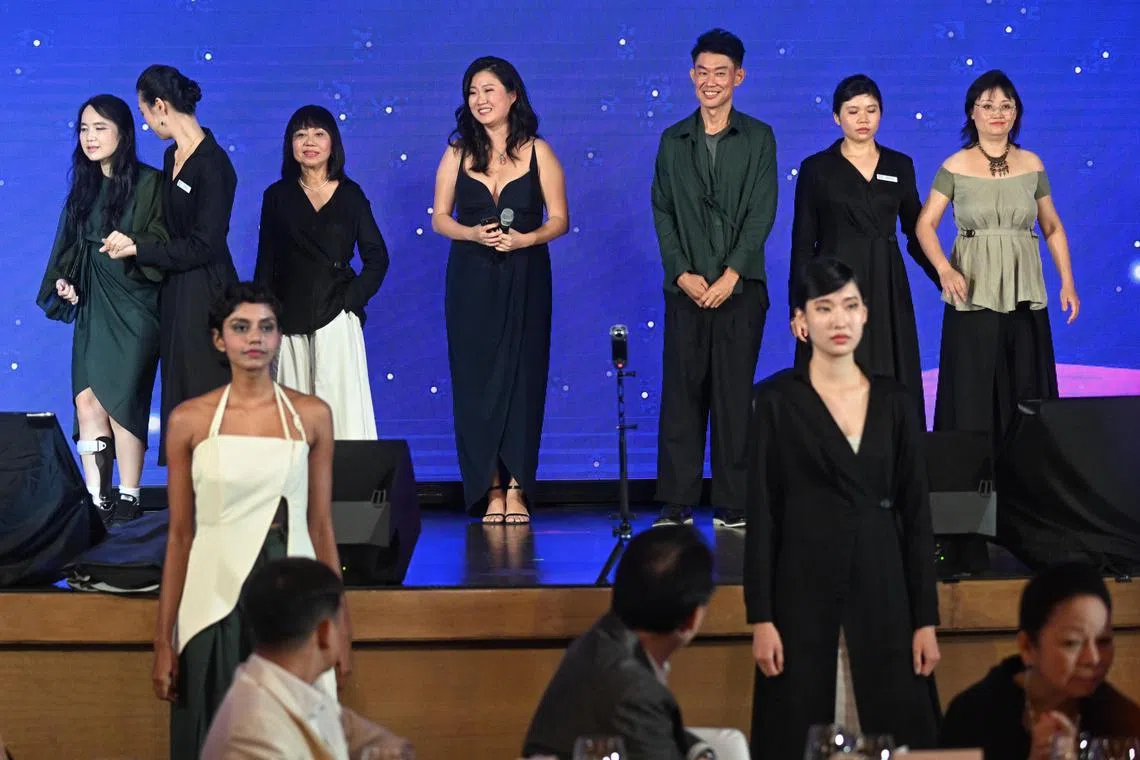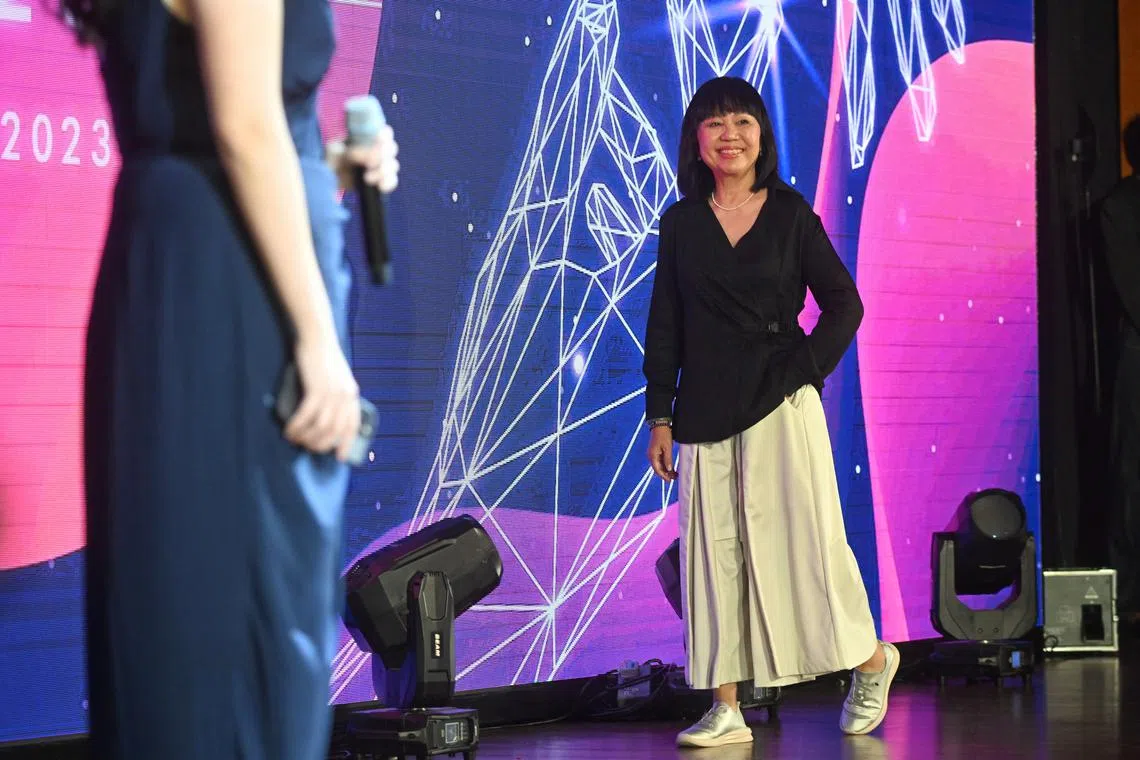Singaporean designs fashionable wear for stroke survivors who have trouble dressing
Sign up now: Get ST's newsletters delivered to your inbox

Werable founder Claudia Poh (centre) designs fashionable clothes for people with limited mobility who have trouble dressing.
ST PHOTO: ARIFFIN JAMAR
Follow topic:
SINGAPORE - She went to study fashion at the Parsons School of Design in New York City to learn to design stylish clothes. But in her third year, Ms Claudia Poh came across her professor’s friend, who had lost the use of both her arms to paralysis.
It changed her outlook on fashion – and many people here now thank her for it. The idea eventually gave birth to a unique fashion label that took centre stage on Friday.
Ms Poh, 27, now designs fashionable clothes for people with limited mobility who have trouble dressing. After returning to Singapore in 2019, she worked with Stroke Support Station (S3) to develop a clothing line for stroke patients. It consults S3’s occupational therapists to provide solutions for those who struggle with zips and buttons, for example.
In a fashion show on Friday, stroke survivors modelled outfits from Ms Poh’s label Werable, which they can put on easily to look good at work, and even weddings.
These were among the highlights of a charity dinner held by S3 to raise funds for stroke survivors. The organisation’s efforts has raised some $3 million from donors.
At the event held at The Ritz-Carlton, Millenia Singapore, Minister for Health Ong Ye Kung said the number of stroke episodes in Singapore increased from about 5,900 in 2010 to almost 9,000 in 2020. This is expected to rise further as Singapore’s population ages, he said.
There are two community-based centres focusing on stroke rehabilitation, at the Enabling Village in Bukit Merah and Jurong Point.
Mr Ong said S3 has grown over the years into a natural extension of the acute care system, to help stroke survivors better reintegrate into their community after discharge from hospital. It has gone from supporting 24 people in 2015 to more than 730 in 2023.
“Singapore will become a super-aged society by 2026
Senior Minister Teo Chee Hean, whose late wife Chew Poh Yim
S3 said stroke is the fourth leading cause of death and biggest cause of long-term disability in Singapore. The incidence of stroke has been on the rise in Singapore, particularly among adults aged 40 to 59. From 2010 to 2020, the incidence of stroke rose by 60 per cent. About one in three of the 8,300 individuals who suffer from stroke annually is under the age of 60.
Mr Ong said Singapore’s preventive care system will be rolled out in July with the Healthier SG movement.
Meanwhile, Ms Poh found that those who suffer strokes or have lost mobility still want convenient and stylish clothing, particularly those who are still working.
One stroke survivor who modelled a piece from Werable, Madam Catherine Lee, said: “Buttons and zips are a challenge for me now, so I go for simple clothes without them, something that I can wear over my head, like shift dresses or loose blouses or T-shirts with tights.”
The 63-year-old, who works as a marine sales manager, added: “I love to dress up for special occasions like my extended family’s weddings. (Ms Poh’s) designs are so out of the ordinary that they make me forget my impairment.”

Stroke survivor Catherine Lee modelling a piece from Werable.
ST PHOTO: ARIFFIN JAMAR
Werable has also worked with a hospital that was interested in pants with hidden pockets for catheters that Ms Poh designed.
Ms Poh said that while some have said this is a niche market to venture into, it is not a small one. “Just think of how many people buy wheelchairs and mobility devices or catheters.”
Werable also works with Paralympic athletes such as swimmer Yip Pin Xiu to design and model for its clothing line, which it sells on its online shop.
Ms Poh also keeps in mind those who temporarily lose mobility due to injury, designing pieces such as an arm sling that looks like a shawl, so it can still be worn by a person after he recovers from an injury.
Inclusive designs can benefit everyone, not just people with disabilities, Ms Poh added. She cited Nike’s FlyEase sneakers, which are hands-free sports shoes that people can easily slip into.
“A stroke survivor told me: ‘You’re only temporarily able, and then you get old’,” she said. “This is sad, but it also gives you an opportunity to build empathy and recognise that this is something that really does affect everyone.”

